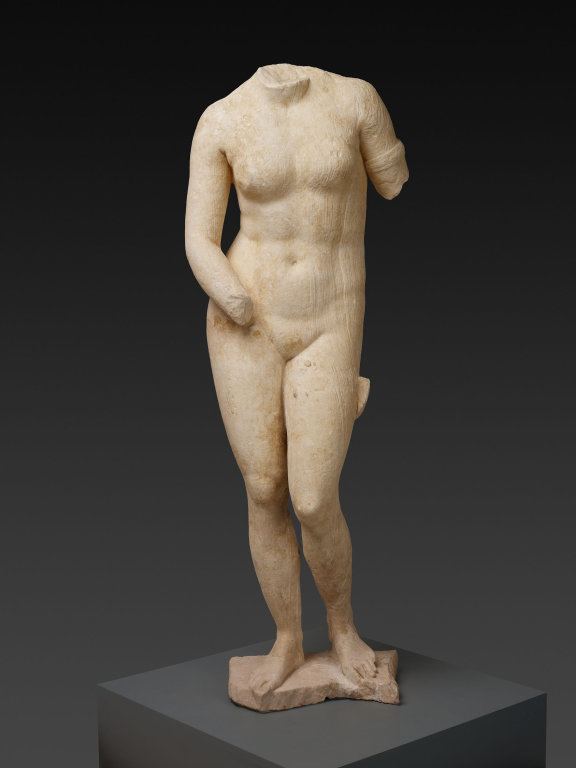 | ||
Similar Praxiteles artwork, Other artwork | ||
Aphrodite of knidos ancient art podcast 26
The Aphrodite of Knidos was one of the most famous works of the ancient Greek sculptor Praxiteles of Athens (4th century BC). It and its copies are often referred to as the Venus Pudica ("modest Venus") type, on account of her covering her naked pubis with her right hand. Variants of the Venus Pudica (suggesting an action to cover the breasts) are the Venus de' Medici and the Capitoline Venus.
Contents
- Aphrodite of knidos ancient art podcast 26
- Ancient art podcast 26 aphrodite of knidos on vimeo
- Original
- Copies
- References
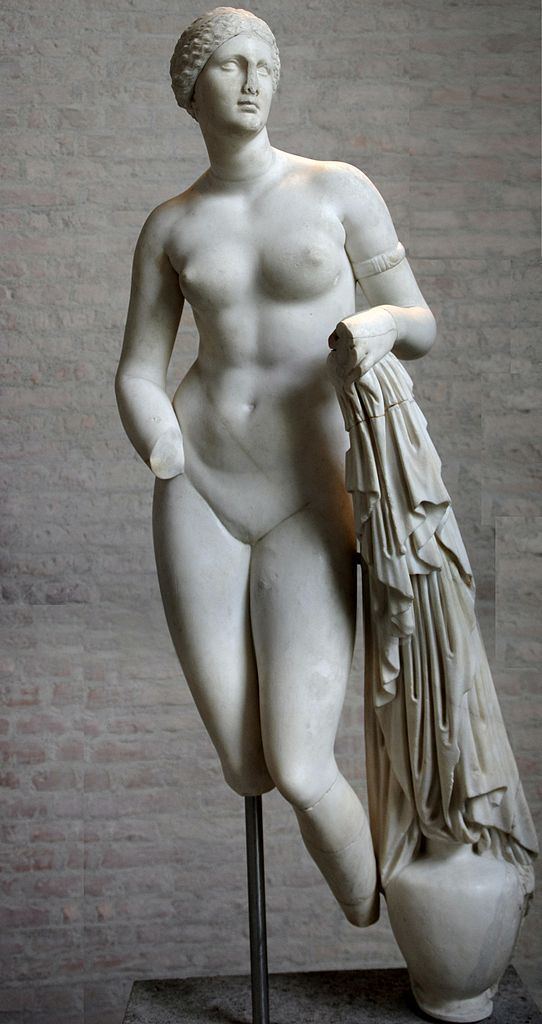
Ancient art podcast 26 aphrodite of knidos on vimeo
Original
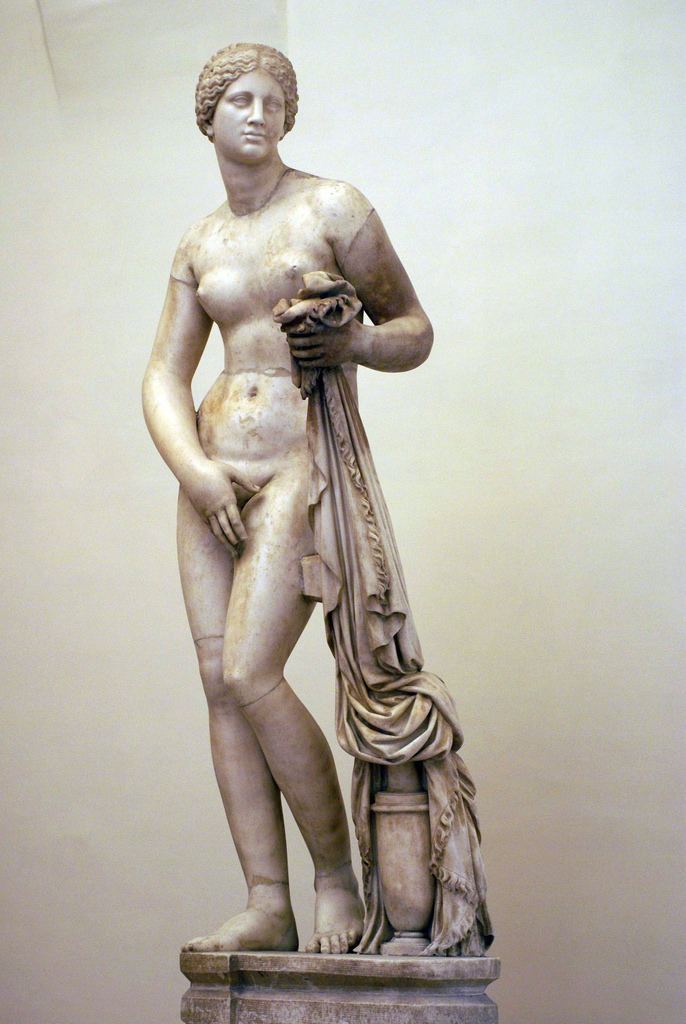
The statue became famous for its beauty, meant to be appreciated from every angle, and for being the first life-size representation of the nude female form. It was especially shocking as it was commissioned as the cult statue for a temple. It depicted the goddess Aphrodite as she prepared for the ritual bath that restored her purity (not virginity), discarding her drapery with one hand, while modestly shielding herself with the other. Her hands are placed in a motion that simultaneously shields her womanhood and draws attention to her nudity. Because the various copies show different body shapes, poses and accessories, the original can only be described in general terms; the body bending in a contrapposto position, an artistic innovation of Greek art which realistically portrays normal human stance, with the head probably turned to the left. Lucian said that she "wore a slight smile that just revealed her teeth", although most later copies do not preserve this.
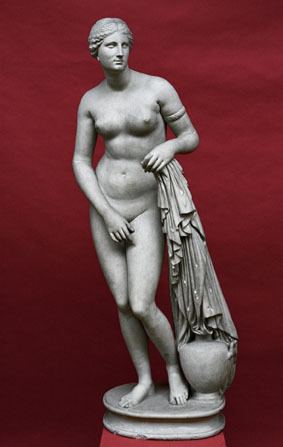
According to a possibly apocryphal account by Pliny, Praxiteles received a commission from the citizens of Kos for a statue of the goddess Aphrodite. Praxiteles then created two versions—one fully draped, and the other completely nude. The shocked citizens of Kos rejected the nude statue and purchased the draped version. The design and appearance of the draped version is today unknown as it didn't survive, nor did it appear to have merited attention, to judge from the lack of surviving accounts.
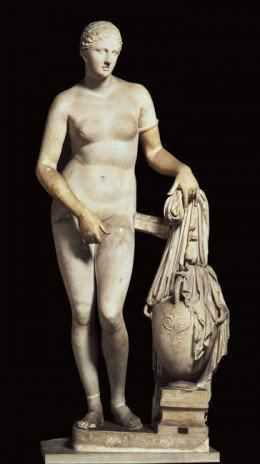
The rejected nude was purchased by some citizens of Knidos and set up in an open air temple that permitted viewing of the statue from all sides. It quickly became one of the most famous works by Praxiteles for the bold depiction of Aphrodite as proudly nude.
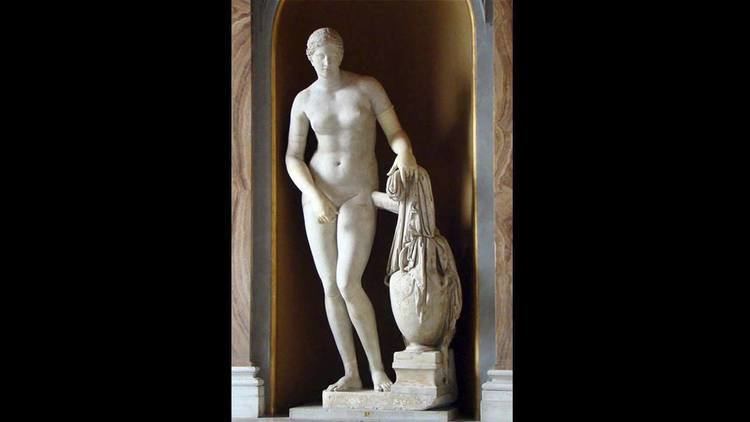
Praxiteles was alleged to have used the courtesan Phryne as a model for the statue, which added to the gossip surrounding its origin. The statue became so widely known and copied that in a humorous anecdote the goddess Aphrodite herself came to Knidos to see it. A lyric epigram of Antipater of Sidon places a hypothetical question on the lips of the goddess herself:
A similar epigram is attributed to Plato:
When Cypris saw Cypris at Cnidus, "Alas!" said she; "where did Praxiteles see me naked?"
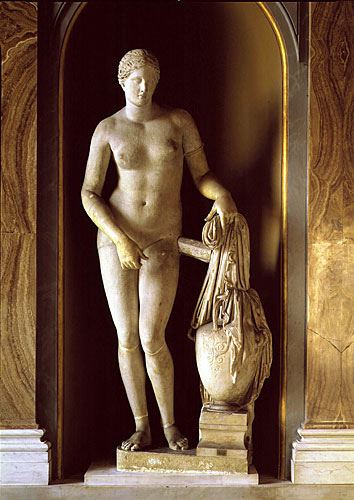
The statue became a tourist attraction in spite of being a cult image, and a patron of the Knidians. Nicomedes I of Bithynia offered to pay off the enormous debts of the city of Knidos in exchange for the statue, but the Knidians rejected his offer. The statue would have been polychromed, and was so lifelike that it even aroused men sexually, as witnessed by the tradition that a young man broke into the temple at night and attempted to copulate with the statue, leaving a stain on it. This story is recorded in the dialogue Erotes (section 15), traditionally misattributed to Lucian of Samosata. The same dialogue also offers the fullest literary description of the temenos of Aphrodite at Knidos:
Of the Aphrodite herself, the narrator resorts to hyperbole:
Copies
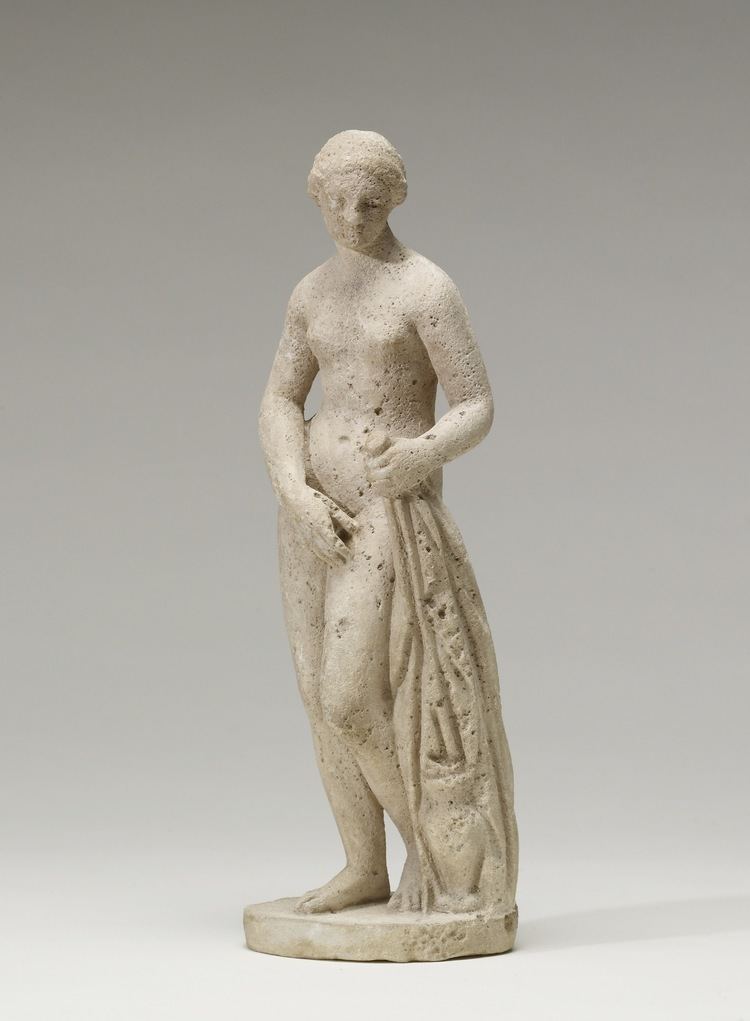
The Knidian Aphrodite has not survived. Possibly the statue was removed to Constantinople (modern Istanbul) and was lost in a fire during the Nika riots. It was one of the most widely copied statues in the ancient world, so a general idea of the appearance of the statue can be gleaned from the descriptions and replicas that have survived to the modern day. For a time in 1969, the archaeologist Iris Love thought she had found the only surviving fragments of the original statue, which are now in storage at the British Museum. The prevailing opinion of archaeologists is that the fragment in question is not of the Knidia, but of a different statue.
As well as more or less faithful copies, the Aphrodite of Knidos also inspired various variations, which include:
